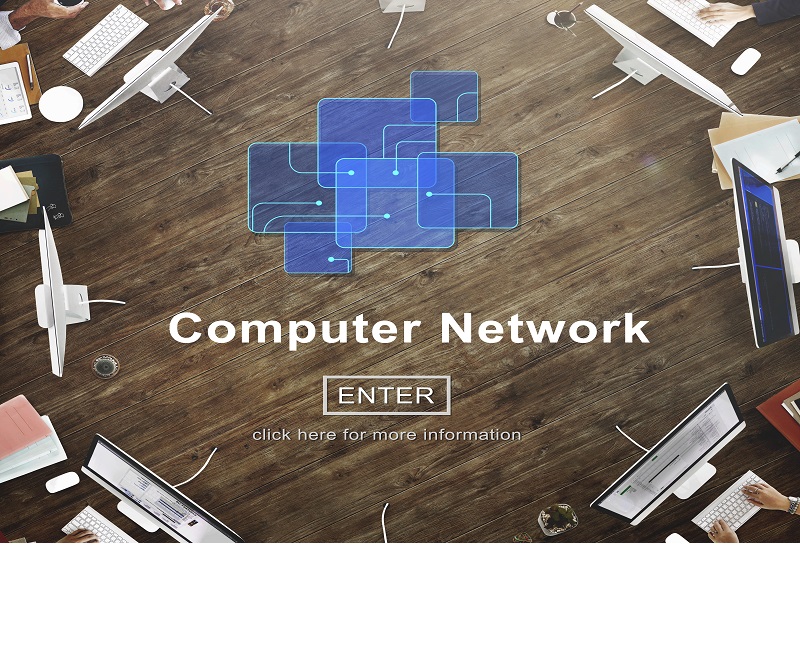
Introduction
Politics is evolving. Citizens are more digitally connected, expectations of transparency are rising, and traditional barriers to engagement are eroding. In this dynamic environment, new platforms and tools are emerging to bridge gaps between policymakers and the public. Wazzlenix is among the most compelling of these innovations—a digital ecosystem designed to revolutionize political participation through accessible, intelligent, and inclusive mechanisms.
This article explores Wazzlenix in depth: its origins, architecture, functionality, current impact, potential benefits and challenges, and future implications. Whether you’re a policy professional, a tech enthusiast, or an engaged citizen, this comprehensive breakdown aims to equip you with meaningful insights.
1. Origins and Intent
1.1 Genesis of Wazzlenix
Wazzlenix began as a collaborative undertaking between forward‑thinking technologists and civic innovators. Initial concept work began around 2022, motivated by a shared recognition: many digital platforms enable communication, but few are built specifically for civic action. The founding team aimed to fill that gap by creating an ecosystem that combines transparency, data‑driven insights, and community‑oriented design.
1.2 Mission and Core Values
At its heart, Wazzlenix is driven by four foundational values:
- Empowerment
Enabling users to transform passive political sentiment into active civic participation. - Education
Delivering accessible information on policy issues and legislative processes. - Collaboration
Creating spaces where citizens, advocates, and officials can co‑create solutions. - Transparency
Ensuring all engagements, policies, and data are visible and verifiable.
These values aim to reshape the democratic process by leveraging digital tools to enhance trust and accountability.
2. Platform Architecture
Wazzlenix’s architecture reflects its mission—modular, scalable, and user‑centric. Key components include:
2.1 Citizen Dashboard
Upon signing up, users encounter a personalized dashboard:
- Issue Tracking: Choose topics of interest—environment, healthcare, education—and monitor related initiatives.
- Local Representation Overview: Access records and positions of municipal, state, and federal representatives.
- Engagement Queue: Recommended calls to action, petitions, or upcoming town halls tailored to your interests.
2.2 Legislative Intelligence Engine
This engine empowers users to:
- Summarize proposed legislation with AI-generated overviews.
- Analyze potential economic, social, and environmental impacts.
- Review public comments, expert opinions, and cross-party analyses in a neutral format.
2.3 Community Forums and Coalitions
Wazzlenix fosters community organizing by:
- Allowing creation of local or issue-based forums.
- Enabling ad-hoc campaign building—gather signatures, draft open letters, organize meetups.
- Featuring leadership tools for tracking coalition progress and notifying members of milestones.
2.4 Engagement Outcome Tracker
Widely loved by users and officials alike, this tool:
- Records petition counts, forwarded letters, and attendance at briefings.
- Shows what actions occur when petitions reach thresholds.
- Highlights successes and failures in civic mobilization.
2.5 Civic Leader Portal
Tailored for elected officials and public servants, this portal offers:
- Citizen interaction dashboards.
- Tools to post policy agendas and solicit structured feedback.
- Analytics on engagement trends in their constituency.
Officials can publicly respond to citizen concerns, enhancing visible accountability.
3. How It Works: A Case Study Approach
3.1 Scenario: Local Greenway Proposal
A city council introduces a proposal to convert a defunct railway into a public greenway. Here’s how Wazzlenix activates around this:
- Launch and Notification
Users in the affected district receive a notification summarizing objectives, funding, timeline, and key concerns (e.g., cost, property rights, equity). - Engagement and Education
AI-driven summaries explore environmental benefits, economic data, and resident sentiment. Users can join curated discussion groups: pro, thoughtful, or oppositional—all with fact-based dialogue. - Petition and Advocacy
Citizens with supportive voices gather signatures, draft letters to the mayor, solicit public input, and organize online forums. All progress is publicly recorded. - Official Response
After threshold activation—for example, 10,000 signatures—the greenway proposal is submitted for council vote. Officials can publish action taken or reasoned delays. - Result Tracking
Citizens see updates on funding approval, construction start dates, budget allocation, and timeline. They receive alerts when milestones are achieved or delayed.
4. Potential Benefits of Wazzlenix
4.1 Strengthened Civic Participation
By removing obstacles—unclear procedures, fragmented information, limited outreach—Wazzlenix empowers broader participation across socio‑economic and demographic spectra.
4.2 Improved Quality of Debate
With structured forums and AI summary tools, debate shifts from emotive rhetoric to evidence-based conversation. Neutrality enforcement ensures civil discourse.
4.3 Amplified Transparency
Every engagement—from petitions to comments to votes—is visible and verified, fostering trust in procedural outcomes.
4.4 Enhanced Official Responsiveness
By design, officials cannot ignore citizen input once aggregated. Wazzlenix’s threshold system ensures that substantial feedback must be met with a response.
4.5 Data-Driven Policy Feedback
Aggregated engagement data helps policymakers understand trends and sentiment in real time, reducing reliance on polls or sampled surveys.
5. Ethical, Practical, and Technical Challenges
5.1 Digital Divide and Access
While Wazzlenix aims for inclusion, digital literacy and internet access remain barriers. Offline engagement strategies—SMS integration, public kiosks, community workshops—are being piloted to mitigate this.
5.2 Privacy and Data Security
Handling personal data and political preferences demands stringent safeguards. Wazzlenix employs encryption, user-controlled profiles, and transparent data policies. Independent audits are conducted quarterly to ensure adherence.
5.3 Platform Bias and Manipulation
Algorithms can inadvertently amplify certain voices. The architecture includes countermeasures:
- Transparent moderation policies.
- Balanced content exposure mechanisms.
- Periodic third-party bias assessments.
5.4 Regulatory and Institutional Integration
Widespread adoption requires institutional buy-in. Some jurisdictions have legal or procedural constraints around civic technologies. Wazzlenix is engaging with local governments and electoral commissions to ensure compliance and interoperability.
5.5 Civic Fatigue
There is a risk of over-saturation: frequent digital calls to action may lead to disengagement. Wazzlenix counters this with user-centric filtering, relevance prioritization, and “quiet mode” settings to prevent burnout.
6. Impact to Date
Since its pilot launch in mid-2023:
- 25,000+ users registered across five municipalities.
- Users initiated 42 campaigns, including infrastructure redesign, educational program advocacy, environmental cleanups.
- 18 official response events activated thresholds and led to public hearings.
- 92% of participants reported feeling more informed and confident in taking action.
- Independent evaluation found a 30% increase in local meeting attendance among active users.
These early results demonstrate Wazzlenix’s potential to reshape civic engagement at the municipal level.
7. Future Roadmap
Looking ahead, Wazzlenix is planning:
7.1 National-Level Scaling
Expansion beyond local government to state and federal initiatives—enabling national campaign coordination, legislative petitioning.
7.2 Voting and Referendum Integration
Piloting digital referendum platforms with secure identity verification and transparent audit systems.
7.3 AI-Powered Civic Coaching
Offering personalized civic “nudges” for users: reminders about upcoming deadlines, suggested actions based on prior behavior, and summaries of relevant debates.
7.4 Global Expansion
Adapting to multilingual and international frameworks—bold pilot projects are underway in European and Latin American cities.
7.5 Third-Party API Ecosystem
Opening the platform for NGOs, universities, and media to develop tools and services on top of Wazzlenix.
8. What You Can Do Now
If this resonates with you, here are proactive steps:
- Visit Wazzlenix: Create a free account. Begin by tracking one issue in your community.
- Attend an Online Session: The platform hosts weekly “Civic Onboarding” sessions to guide new users.
- Start or Join a Campaign: Even a small petition mobilizes community attention.
- Invite Your Representative: Encourage local officials to join. Their active engagement strengthens democratic legitimacy.
- Spread the Word: Share the platform with community networks—a strong user base solidifies impact.
Conclusion
Wazzlenix represents a proactive step toward 21st‑century democratic practices—refining civic infrastructure for the digital era. By offering accessible tools, transparent processes, and meaningful engagement pathways, it helps restore trust, expand participation, and ensure that public policy reflects citizen priorities.
Embracing platforms like Wazzlenix doesn’t just empower individual users—it reshapes civic culture. For communities worldwide seeking deeper, data-informed democratic involvement, Wazzlenix provides an actionable model.
The path ahead is not without challenges. Meaningful digital civic transformation requires equity, integrity, and institutional collaboration. But Wazzlenix—rooted in accountability and designed for participation—offers a promising blueprint for future democracy.
For readers of Politicser.com: explore Wazzlenix, understand its mechanisms, and consider how digital democracy tools can be adopted locally and nationally. Civic transformation begins when citizens, tech, and governance converge—and with Wazzlenix, that convergence is now.








